My friend Brent posted a link on Twitter today to an article about the inexorable growth in wind power capacity in the US. It reminded me that I’d been sitting on this piece about wind power for a month or two because I couldn’t figure out how to finish it properly. But ending be damned… the stats speak for themselves. They’re an interesting counterpoint to the Trump government’s continued idiotic obsession with bringing back carbon-heavy fossil fuel power generation. His antiquated energy policies look dafter and dafter as every month passes.
Sandbanks and Seaweed.
Growing up in southeast Kent, we spent our summers on the beach, assuming we could get past the great piles of stinking, rotting seaweed washed up on the tideline. When the tide is low, a large sandbank –the Goodwin Sands- emerges a few miles off shore; a 10 mile long yellowish-orange strip of sand rising up gently out of the sea.
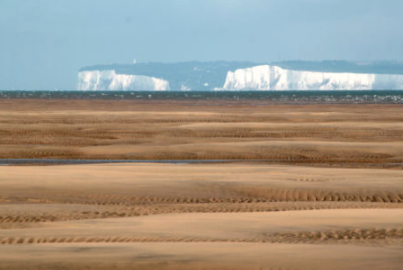
Over 2,000 ships have been wrecked on the bank since records began, and from the cliff tops you still can see the masts of old ship wrecks pointing up to the sky out of the sand at low tide, like long-dead fingers. Because of the danger to shipping, either end of the sandbank used to be marked by a lightship. For many decades the lightships were operated by a crew of 2 or 3 men -one of loneliest jobs on the planet, I’m guessing- but now they’re fully automatic and unmanned. On foggy days, the eerie booming of the fog horns warning ships away can be heard all across sourthern Kent, a deeply familiar sound to anyone who grew up there.
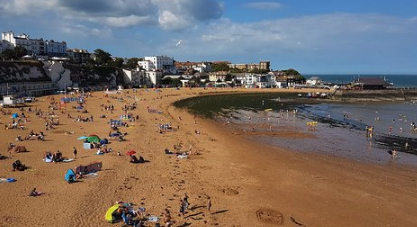
Bloody Turbines Everywhere.
Today, if you look north into the Thames Estuary from the white chalk cliffs, the view has changed dramatically. At night, the myriad red navigation lights of the Thanet Wind Farm, one of Europe’s largest offshore turbine arrays, twinkle away like so many Christmas lights. The project covers 35km2, and has 100 turbines producing 300MW, enough to supply 240,000 homes.
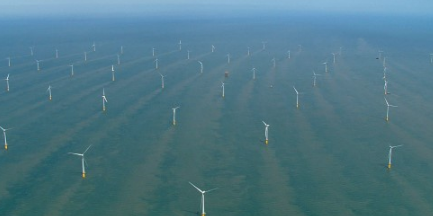
Watts. Millions Of Them.
In February this year, it was announced that Europe’s biggest offshore wind farm was coming on line in the North Sea, near the fishing port of Grimsby. Hornsea One is an installation of 174 massive turbines, each 195m tall, which will have 1.2 Gigawatts of capacity, powering 1-million homes. Hornsea One is the first of 4 massive new farms, imaginatively named Hornsea One to Four, proposed for the waters off Grimsby, producing 6 gigawatts at full capacity. Five million homes. The numbers are mind boggling.
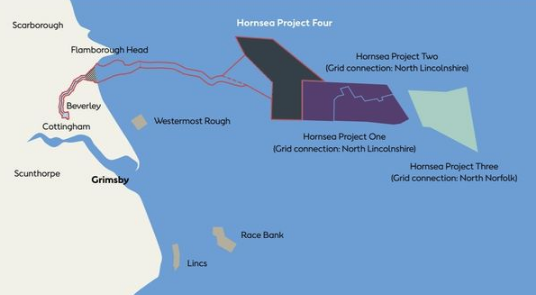
But look, if Donald Trump says wind turbine noise causes cancer, who am I to question him? It probably explains why so many wind farms in Europe are tucked away offshore, built on shallow seabed in the drafty backwaters of the North Sea or the English Channel, where nobody can hear them. Except the fish. But they don’t count, although I am concerned that one day I’ll be buying tumorous North Sea haddock to go with my chips and mushy peas.

But The Lights Are Still On? WTF?
President Trump also says that when the wind drops, the TV and lights and stuff will go off because turbines don’t turn when there’s no wind. But none of my UK-based relatives have ever mentioned not being able to watch Netflix or surf the web when the wind drops, despite close to 20% of the UK’s total electricity supply coming from wind turbines in 2019. Could it be that Donald doesn’t know what the fuck he’s talking about and needs better advisors? In fact, modern turbines generate usable amounts of electricity over 90% of the time, and besides, all large-scale turbine farms are usually part of the larger power grid in whichever country they reside, which (normally) ensures uninterrupted supply.
For all of Trump’s wilfully-sarcastic scientific ignorance, and the GOP’s erotic fascination with fossil fuels, I’m pleased to say that Europe, and the US for that matter, is giving them the finger. The statistics of Europe’s rapid wind power growth are remarkable. In 2017, roughly 12% of Europe’s electricity needs came from wind turbines, and 55% of all new generating capacity was wind; not just renewables, all new capacity. Total wind capacity grew by 18%(!) in 2018 with 15 new offshore wind farms completed during the year. The European Wind Energy Association estimates that 230 gigawatts of capacity will be installed by 2020 providing up to 17% of the EU’s electricity supply. The UK and Germany led the way with 85% of new installations.
Capacity growth has been so fast, that in Q1 2019, wind energy surpassed total European hydroelectric generation capacity for the first time. Wind is now expected to be the largest source of electricity in Europe at some point between 2025 and 2030, less than 10 years away. I guess Europe doesn’t believe what the Donald says and is voting with its investment Euros. Brent’s link pointed out that in April for the first time in the US “Renewable energy outworked coal…—and will likely do the same in May—though the trend likely won’t last once air-conditioners switch on” despite Trump’s deep desire for it to be otherwise.
Texas. Leading The Way.
The private sector -which, to be fair on the detractors, has been supported for years by federal tax credits designed to kick-start the industry- appears to be ignoring the GOP’s skepticism (funny that) and is forging ahead, expanding the number of turbines across the US, with more than 57,000 installed to date. The industry employs some 114,000 people across the country. Capacity in the US is currently 90 gigawatts, projected to rise to over 400 gigawatts by 2050, which will supply more than a third of the country’s needs. Hydrocarbon-rich Texas leads the way with nearly 23 gigawatts of capacity, a delicious irony, which would place it 6th in the world rankings of wind power generation. Meanwhile, New Mexico is installing capacity faster than any other state in the Union, with a 51% increase in 2017 alone.
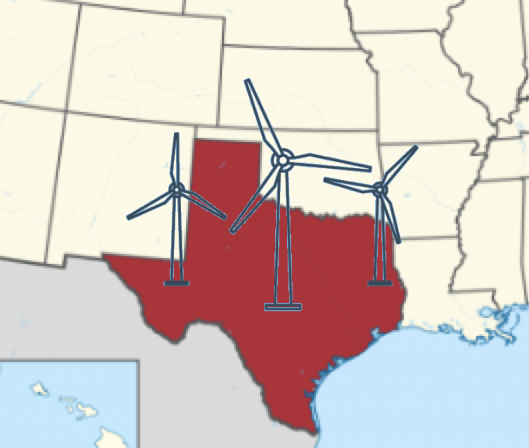
(As an aside, I never knew that wind turbines produce power according to a cube rule: if you double the wind speed, you get eight times more power. And obviously, the windier it gets, the more juice you have to sell, so the quicker you recoup your upfront turbine costs, hence –duh- you build in windy places.)
A big potential fly in the wind farm ointment is climate change, something that renewable energy may help to slow. Specifically, the physical effects of extreme weather systems like hurricanes can be, er… bad for turbines. As climate change continues, there’s increasing potential for major storms that could physically damage the renewable infrastructure, particularly offshore turbine farms. Evidence suggests that hurricanes in the North Atlantic have increased in frequency and intensity over the last few decades. The Center for Climate and Energy Solutions quotes research suggesting that a 45-87 percent increase in the frequency of Category 4 and 5 hurricanes is possible.
Unsurprisingly, offshore turbines have a hard time in Category 5 hurricane winds. Most turbines are designed for a maximum gusting wind speed of about 150 mph, a legacy of European design parameters for the North Sea which rarely suffers from hurricane force storms. So Cat 5 winds, which can hit more than 220 mph, can be very damaging. The photo below comes from a Chinese on-shore wind farm that was hit by a tropical cyclone and came off worst.

But turbine design is improving all the time. Newer designs have the actual hub and blades facing downwind, rather than into the wind. The blades bend away from the turbine tower in strong winds, which avoids the danger of them colliding with the tower as they flex. Turbines are also getting bigger, and stronger, and unit energy costs are coming down.
All of which is highly encouraging for wind, along with solar, becoming the dominant clean energy sources of the future –sorry Donald, I meant to say the clean energy sources of today.


It’s also worth point out that there are btwn 50,000 and 60,000 coal jobs in the US, about 1/2 the number of wind turbine related jobs. These are high paying jobs of the future compared to the dirty and dangerous coal mining jobs. For a very small investment the US could retrain coal miners for jobs of the future . . . but that don’t sound so good in a country western song now does it?
takes the sob story aspect out of the song to be sure! “lost my job in the coal mine, but renewables saved me from the job line..”